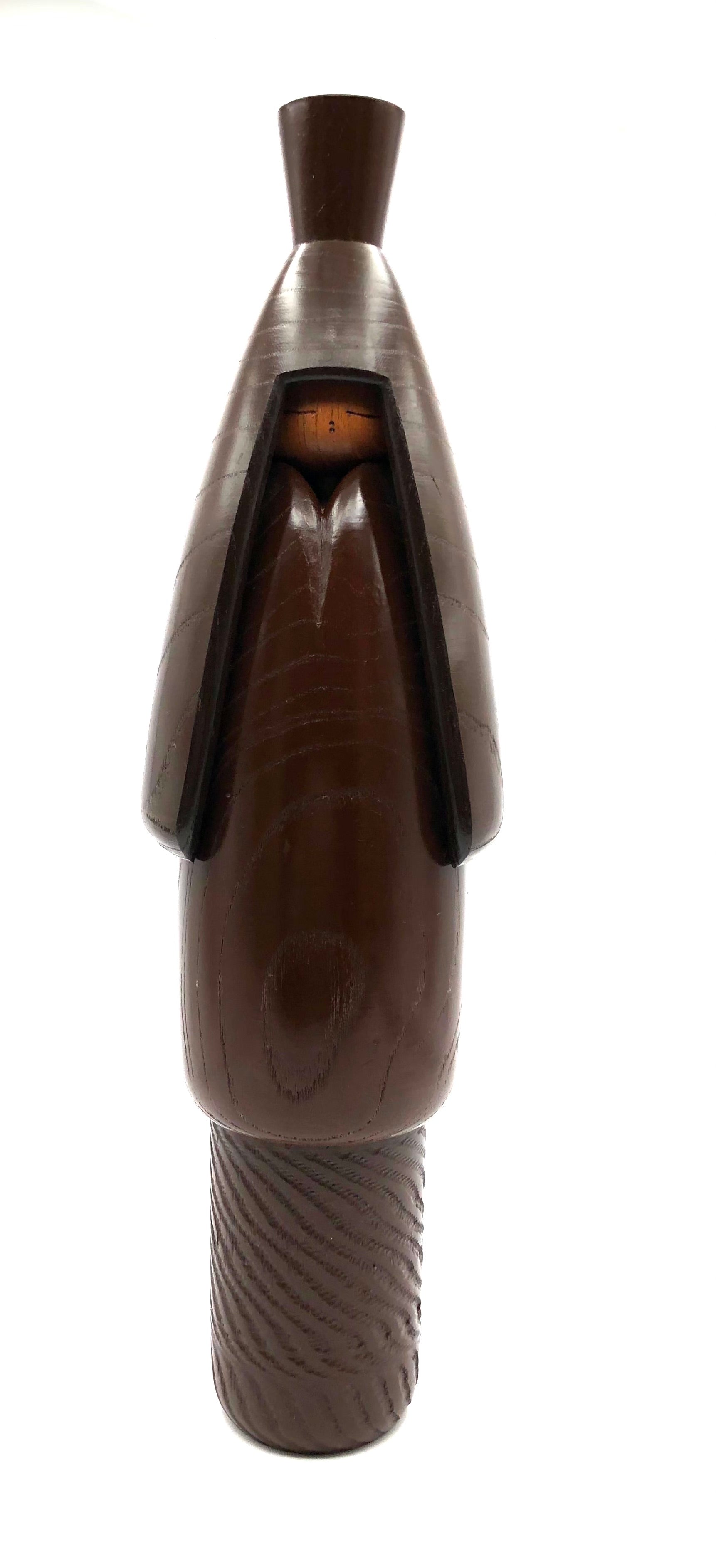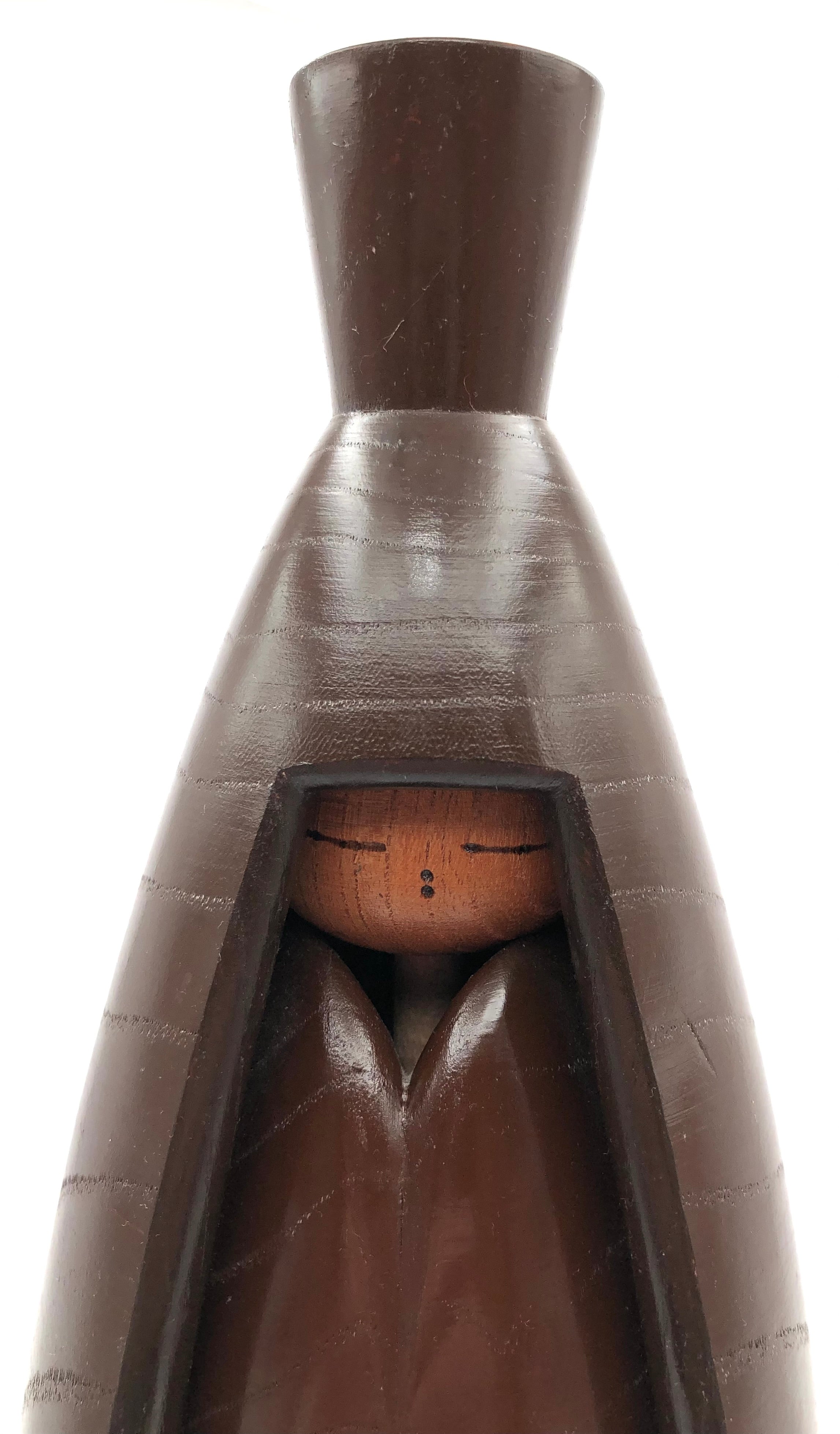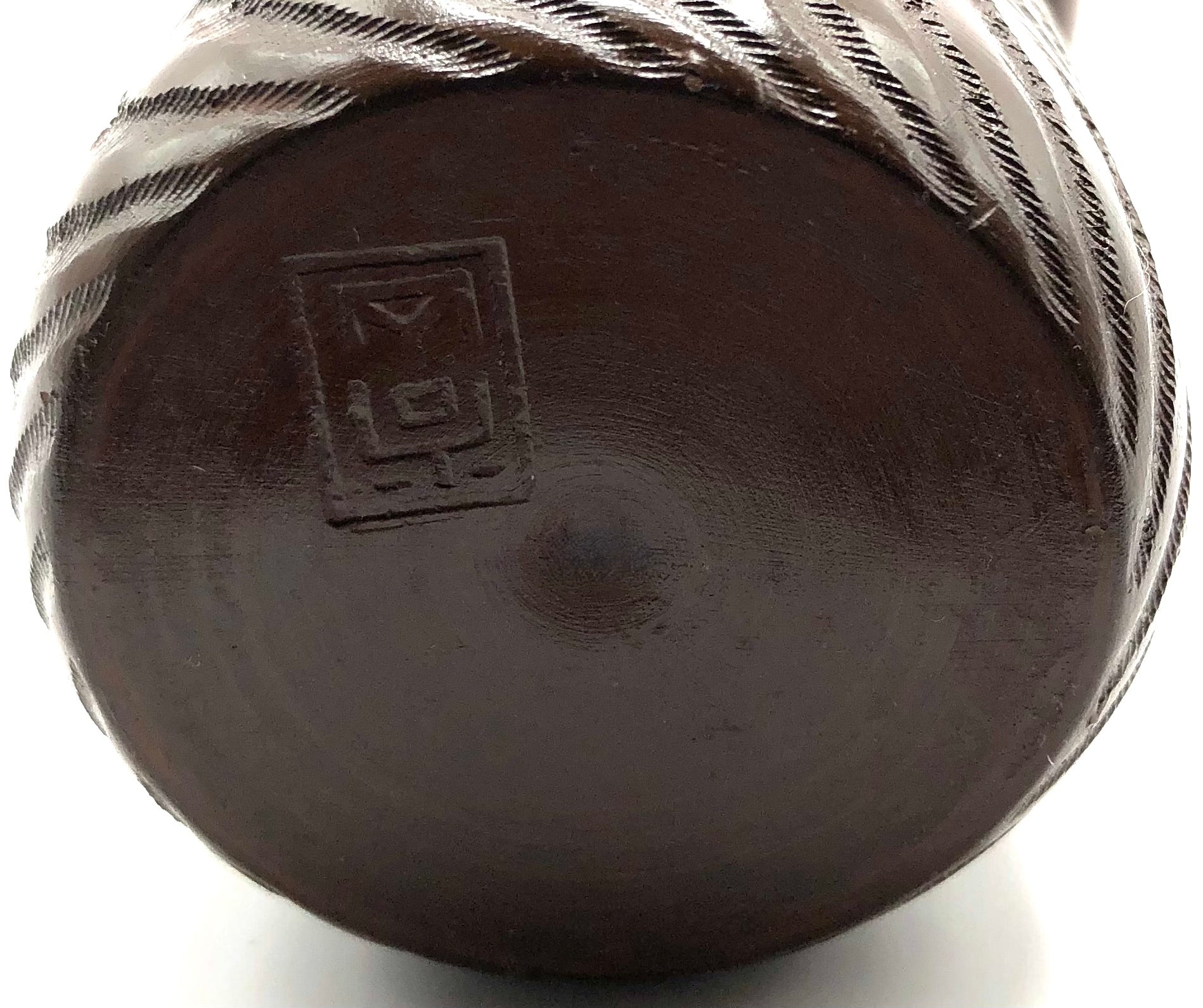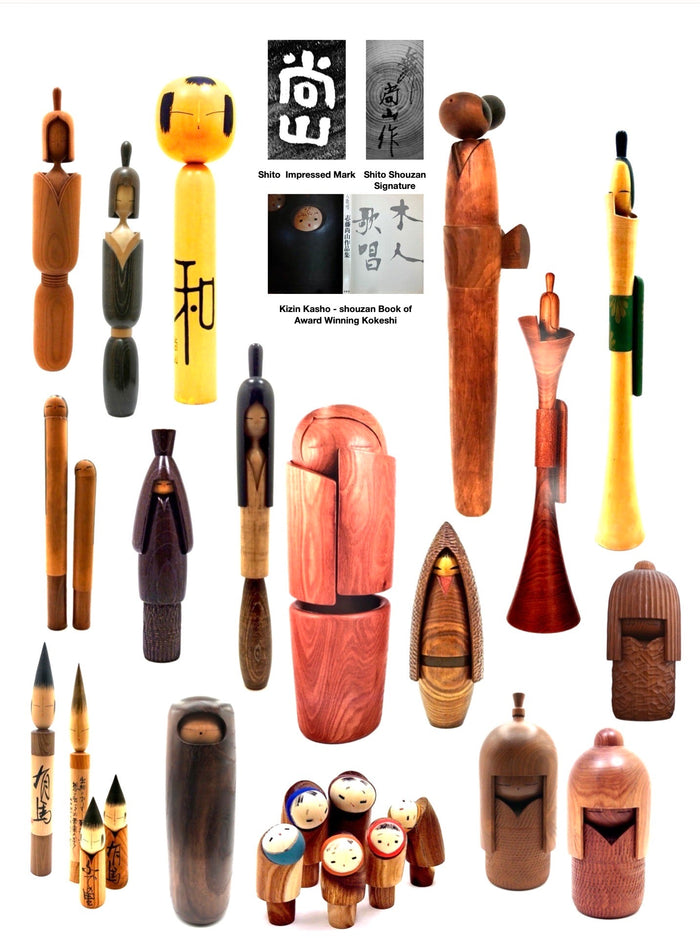


Vintage Sosaku Kokeshi entitled: “Yukiguni no Warabe | Children of the Snow Country” by Shouzan, Shido (1932-1995)
Dimensions: 16-0”h
Master Shido Shouzan was born in Oita prefecture in 1932. He was one of the first kokeshi artists to use a variety of woods in his creations, including Mulberry, and Persimmon. He later introduced Keyaki, (Zelkova), and Enju, (pagoda tree wood), for doll making. Living in Yonezawa City, he was influenced by the snowy winters and this motif is very prominent in his work. The doll is a maiden wearing a Traditional rice-straw coat called “Mino”. As with most of his creations, he names his works after completing them to help him define the piece.
This wonderful and elegant Kokeshi illustrates multiple layering of clothing: snow coat, (Mino), the Kimono, and the undergarment. The doll features a beautiful, turned, naturally finished wood, with an undergarment showing a repetitive wave-like textural pattern called ‘Chatter’ Work. This is the only portion of the doll that has any surface treatment or painting. The form speaks for itself and allows the viewer to enjoy the visual and tactile character exhibited by the wood utilized in its’ creation. The body of the doll has a thin chocolate color lacquer, to define each section, and allow the Enju (pagoda wood) graining to show through. It is then sealed with a natural candle wax, (Roseau no ro). The doll is signed with Shouzan-san’s impressed stamp on the bottom.
The piece was published in the 2022 publication of Sosaku Kokeshi: Celebrating the Major Artists of the Creative Movement. For more information on this artist go to the following link: https://mingeiarts.com/collections/artisan-woodworker-shido-shozan-1932-1995.
Condition: Excellent lathe turning, detailing, and size, for it is outstanding, impressive, and beautiful. No chips, cracks, breaks, missing pieces, or restoration, and retains its original details and finish. The piece meets all the standards of the vintage collectible Sosaku Kokeshi by Shouzan, Shido.

Artisan
Woodworker: Shido, Shouzan
1932-1995
Biographical History:
Shouzan began making Sosaku Kokeshi in 1959, soon after he graduated from Chuo University with a law degree. He is considered by Kokeshi collectors and critics alike to be arguably the most influential artist in the world of Sosaku Kokeshi doll-making. Shido-san’s main focus was depicting unadorned Northern girls in the traditional “Mino”, or Snow Coat, but he also produced tall, thin dolls, which were sparsely decorated. His keen sense of design, minimal use of color, and simple elegant shapes set him apart from his peers, making him one of the most collectible artists emerging from the creative period of the ‘60s winning various awards since 1961. He served as a judge of the All Japan Kokeshi Contest from 1970 to 1976. During that time Shozan published a book entitled Kizin Kasho comprising examples of his award-winning Kokeshi. His dolls have been collected and exhibited worldwide and winner of the Prime Minister’s Award, among many other awards.
Collector's note – descriptive qualities, standard characteristics & ornamentation styles:
Shito-san loved studying the use of combining different types of wood to gain the desired effect and to give dimension to his pieces. He also enjoyed creating slender, tall dolls to support the fact that they resemble the tall, thin trees seen throughout Japan. He incorporated a repetitive textural pattern called ‘Harmonic Chatter work’ to enhance the natural qualities of the wood in many of his works. He particularly enjoyed the textural qualities of ‘Chattering’ on the rain/snow coat, (Minomushi), which is a favorite theme, executed with minimal painted ornamentation, with an emphasis on the natural wood. In general, it is said that Japanese culture is one of modesty and humility. Occasionally saw different types of headdresses, one of which he called a ‘Tsunokakushi’, which is a wide headdress or hood, that covered elaborate hairstyles. We are told that the Japanese people regulate their behavior and response by reading faces and the eyes of others. Here, as well as elsewhere, you will see many examples of different characteristics of the eye's expressions. His most famous doll, which was considered a favorite was called “Mai”, a dancer, which was an elegant and slender doll with a beautifully formed Kimono focusing on traditional hair design (Mage) with an emphasis on a brightly colored “obi” which brings forth the best use of complex geometry to create traditional Japanese clothing elements which were created in 1970.
Shito-san was a prolific artist/woodworker of Kokeshi dolls some of which were whimsical, some focusing on calligraphy citing haiku (poems). We additionally see unusual subjects focused on Zen Buddhism and figures of Daruma, (Bodhidharma) of which most were made in a “roly-poly” type figure seen throughout festivals in Japan.
Explore & Learn More about Woodworker: Shido, Shouzan